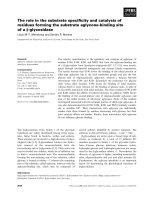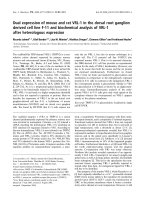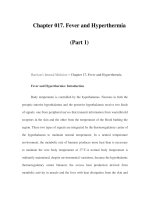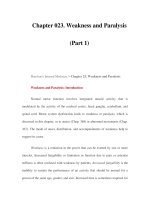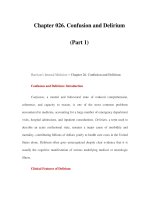IB minitest 4 Chapter 4 – Economic and Socioeconomic Forces
Bạn đang xem bản rút gọn của tài liệu. Xem và tải ngay bản đầy đủ của tài liệu tại đây (95.64 KB, 3 trang )
International Business
Chapter 4 – Economic and Socioeconomic Forces
Mini Test
Task 1 – Choose the correct answer.
1. Among the more important economic indicators are:
A) income distribution.
B) unit labor costs.
C) private investment.
D) all of the above.
2. The total of all final goods and services produced less net foreign factor income from
abroad is:
A) gross domestic product.
B) gross national product.
C) purchasing power parity.
D) total purchasing power.
3. When given the choice between investing in a nation with a higher GNP per capita but
a low growth rate and a nation in which the conditions are reversed, management will
generally:
A) choose the nation with a higher GNP per capita but a low growth rate.
B) choose the nation with a lower GNP per capita but a high growth rate.
C) be indifferent and therefore look for other distinguishing factors.
D) choose the nation with the highest population.
4. According to the International Telecommunications Union, the best gauge for
measuring a country's level of development is:
A) per capita income.
B) state of the construction industry.
C) density of population.
D) number of telephones.
5. Generally, the wealthier a country is, the more telephone lines it has. In 1998, the
richest countries had:
A) one phone line for every one person.
B) two phone lines for every one person.
C) one phone line for every two people.
D) one phone line for every three people.
6. Countries with slower rising unit labor costs attract management's attention because:
A) they are investment prospects for companies striving to lower production
costs.
B) they may become sources of new competition in world markets if other firms
in the same industry are located there.
C) both "a" and "b".
D) none of the above.
7. Which of the following is not a reason for relative changes in labor costs?
A) workforce size
B) compensation.
C) exchange rates.
8. A firm that produces inputs for its subsequent manufacturing processes is described as:
A) horizontally integrated.
B) a conglomerate.
C) vertically integrated.
D) consolidated.
9. A country's socioeconomic dimension measures information about the:
A) population's physical attributes.
B) population's purchasing power.
C) population's GNP per capita.
D) population's GDP per capita.
10. The most general indicator of potential market size is:
A) GNP.
B) GDP.
C) purchasing power parity.
D) total population
11. An expanding market may be signified by:
A) the population expanding faster than GNP.
B) GNP increasing faster than the population.
C) an accruement of technical and university graduates.
D) All of the above.
12. Which of the following is the fastest graying nation in the industrial world?
A) The United States.
B) The United Kingdom.
C) Japan.
D) France.
13. Product distribution and communications tend to be simpler and less costly in
countries that are:
A) densely populated.
B) sparsely populated.
C) small.
D) highly developed.
14. Forecasts made by governments with industry collaboration of the direction they
expect the economy to take are referred to as:
A) national economic plans.
B) indicative plans.
C) joint plans.
D) collaborative plans.
15. Birthrates are declining in nearly all nations because:
A) governments are providing family planning programs.
B) women are continuing their education and marrying later.
C) a greater degree of urbanization is enabling women to become employed and
self-supporting.
D) all of the above.
Task 2 – Decide the statements True or False.
1. Multinational headquarters generally will insist that subsidiaries in nations with low
inflation rates invest all their cash to earn interest and not keep it in bank accounts.
2. Economic data provide information on the number of people and the socioeconomic
data tell us if they have purchasing power.
3. Differences in GNI/capita tell us something about the relative wealth of a nation's
inhabitants, but we also need to know how the GNI is distributed.
4. A simple calculation based on GDP, total population, and income distribution may
indicate that a country is not an adequate market.
5. Changes in wage rates may cause the multinational firm that obtains products or
components from a number of subsidiaries to change its labor unions.sources of supply
Task 3 – Answer the questions.
1. What is the underground economy? Why is the existence and level of an underground
economy important for managers?
2. Why is income distribution important to marketers in international companies?

